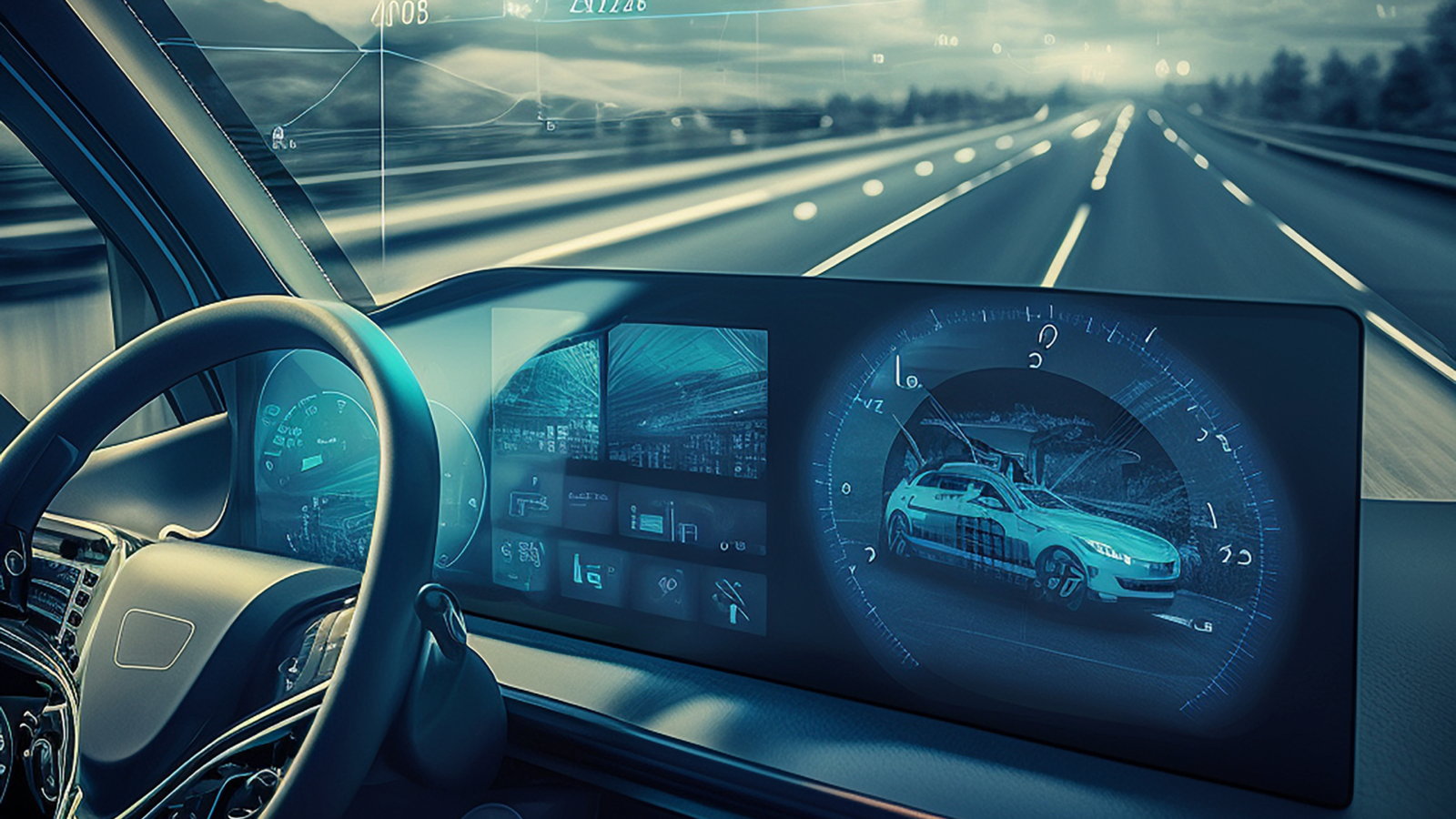The automotive industry has been currently witnessing huge transformations. Great advancements in Artificial Intelligence (AI) are redefining every aspect of vehicle development, production, and operation. The center of this revolution is the rise of Generation AI (GenAI). Gen AI is a sophisticated amalgamation of AI technologies that promise to revolutionize the automotive landscape from research and development laboratories to the everyday roads we traverse. GenAI includes the convergence of machine learning, deep learning, computer vision, natural language processing, and robotics, among other disciplines. These technologies synergize to empower vehicles with great levels of autonomy, intellect, and adaptability. GenAl applications in the automotive industry fundamentally reshape the relationship between humans and automobiles.
Research and Development Innovations
The journey of GenAI within the automotive sector begins in the domain of research and development. In this domain, engineers and scientists tirelessly innovate to make it possible, that sometimes seemed impossible. Here, AI serves as both a catalyst and a canvas. It enables the exploration of concepts such as autonomous driving, predictive maintenance, and personalized user experiences. Through stringent investigation and iterative advancement, researchers use the power of AI to unlock new boundaries in safety enhancement, efficiency, and performance.
Evolution of Generative AI in Automotive R&D:
In recent years, the GenAl automotive technology industry has seen a great advancement caused by the integration of Al in automotive research and development (R&D) processes. AI has risen as the stepping stone of innovation, which enables manufacturers to enhance vehicle safety, efficiency, and user experience. Advanced AI algorithms combined with big data analytics have revolutionized the way researchers model complex scenarios and optimize vehicle performance.

AI-driven simulations permit researchers to do virtual tests and experiments to significantly reduce the time and cost traditionally associated with R&D. By using machine learning algorithms, automotive engineers can analyze massive datasets generated from vehicle sensors, test fleets, and simulated environments. This data-driven approach empowers researchers to gain deep insights into vehicle behavior, identify performance bottlenecks, and iteratively refine designs to meet stringent safety and performance standards.
Optimizing Performance and Efficiency:
GenAl automotive technology has an important role in optimizing vehicle performance and efficiency across different facets of automotive engineering. By analyzing huge portions of data, AI algorithms can tune well with engine performance, lessen emissions, and improve fuel efficiency. Machine learning models instructed on historical driving data can indicate driver behavior and optimize powertrain operations to increase fuel economy without compromising performance.
Also, AI-driven predictive maintenance systems help in identifying likely problems before they arise. It also reduces downtime and maintenance costs. These systems analyze sensor data and performance metrics in real time. They can also catch irregularities in vehicle components, predict maintenance needs, and plan timely repairs or replacements. This strategy not only enhances vehicle trustworthiness and durability but also reduces unanticipated downtime and related expenses for vehicle owners and operators.
On-Road Implementation of GenAI:
The transition from R&D to real-world implementation shows an important stage in the adoption of Generative AI in automotive. Automakers are continuously integrating AI technologies into production vehicles. This comprises features such as self-parking abilities, voice-activated assistants, and developed driver monitoring systems.
Self-driving technologies are slowly paving their way onto public roads. They offer enhanced protection and comfort for both drivers and passengers. Advanced driver assistance systems (ADAS), such as Tesla’s Autopilot and Cadillac’s Super Cruise, show the possibility and potential of semi-autonomous driving technologies in real-world environments. These systems use AI algorithms to examine sensor data, analyze road conditions, and assist drivers with tasks such as lane-keeping, adaptive cruise control, and automatic emergency braking.
Enhancing Vehicle Safety with GenAI:
The main focus of Generative AI in automotive R&D is enhancing vehicle safety features. GenAI enables the development of driver-assistance systems (ADAS) that add human driving abilities and lessen the risk of accidents. These systems use AI algorithms to find out real-time sensor data from cameras, LiDAR, radar, and other sensors. It allows vehicles to make split-second decisions to avoid collisions.
ADAS powered by GenAI includes adaptive cruise control, lane-keeping assistance, and collision avoidance systems. These systems monitor the vehicle’s surroundings and predict potential hazards. It then takes steps to keep a safe distance from other vehicles, stay within lanes, and apply emergency braking when required. By adding human drivers with AI-powered assistance, GenAI works for overall road safety enhancement and reduces the possibility of accidents.
Personalized User Experience:
AI-powered infotainment systems are revolutionizing the in-car user experience. It is making driving more delightful and suitable for passengers. GenAI can examine driver priorities, behavior, and contextual data to provide personalized content, suggestions, and aid. Whether it’s modifying the environment control settings, choosing music playlists, or delivering navigation directions, AI makes the driving experience to the individual user’s priorities and practices.

Natural language processing (NLP) algorithms enable seamless voice interaction with in-car infotainment systems. It allows drivers to regulate different elements and access information hands-free. By acknowledging and replying to spoken commands, AI-powered virtual assistants improve driver safety and convenience and reduce distractions and cognitive load. Also, AI-driven suggestion engines recommend relevant content, such as nearby attractions, cafes, or points of interest, according to the driver’s preferences and location.
Impact on Future Mobility:
The increasing adoption of GenAI in automotive is revolutionizing future mobility. It is giving us an age of safer, more efficient, and sustainable transportation. By using advanced sensors, AI algorithms, and connectivity technologies, AI in self-driving cars can tackle complex urban environments. Also, AI-driven mobility-as-a-service (MaaS) platforms assure to give convenient, cost-effective options for traditional car ownership. By pooling resources and coordinating transportation services, MaaS providers can optimize vehicle utilization, reduce congestion, and provide on-demand access to shared mobility options made according to the individual requirements and priorities. From ride-hailing and car-sharing services to autonomous shuttles and micro-mobility solutions, AI-powered MaaS platforms offer a glance into the future of urban transportation where mobility is seamless, endurable, and available to all.
Challenges and Considerations:
We know that GenAI has a lot of benefits in the automotive industry. But, we should also be aware of the fact that it is also associated with various challenges and considerations. These challenges must be taken care of to assure ethical and responsible deployments. Data security and privacy are of the utmost importance. AI systems only lean on extensive quantities of sensitive data compiled from vehicle sensors, onboard cameras, and connected devices. Manufacturers must enforce strong cybersecurity standards to protect this data against unauthorized access, exploitation, or mishandling.
Ethical concerns that encompass autonomous driving also pose substantial challenges for the widespread adoption of GenAI in automotive. As self-driving technologies advance, queries emerge considering liability, responsibility, and moral decision-making in vital situations. Automakers, policymakers, and regulatory bodies must leverage GenAl solutions for automotive challenges and cooperate to specify apparent policies and criteria for the secure and moral deployment of autonomous vehicles on public roads.
Conclusion:
GenAI is entering a new age of advancement in the automotive industry. It has paved a long way by reaching the roads from R&D laboratories. By using AI technologies, manufacturers can increase vehicle safety, enhance the driving experience improvement, optimize performance, and provide customized user experiences. However, acknowledging the full potential of GenAI necessitates tackling different problems and complexities while also accepting the opportunities for on-road implementation. As we begin this journey towards a smarter, safer, and more sustainable future of transportation, GenAI will always play the most important role in shaping the automotive landscape.







